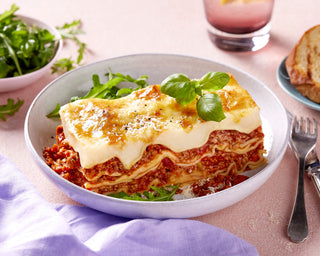
What springs to mind when you think chilli peppers? …. the band, your local Indian restaurant, hot sauce, or maybe that burning sensation when you’ve underestimated the ‘hot’ curry! Whether you're chilli obsessed, dabble in a ‘mild’ dish, or you avoid chilli at all costs, you probably didn’t realise that the most common form is sitting on your dining room table... right next to your salt!
That’s right, black pepper is the most common form of chilli pepper, used in nearly every cuisine around the world as a seasoning, adding too many classics we know and love (1). Interesting as this is, we’re not here to talk about black pepper, we’re here to unravel truly spicy food!
Where did chilli peppers come from?
With chilli as the base of many cuisines, you might find it hard to pinpoint where this potent fruit originally came from. It's thought that chilli peppers originated in Mexico and made their way to the rest of the world after the Colombian exchange (1). Well, this little fruit has made a BIG impact on a lot of the cuisines we know and LOVE today.
What makes it so spicy?
The main compound responsible for heat is called capsaicin, found in the highest concentration in the internal veins of the chilli and the nodule shaped area at the top called the capsaicin gland (2). You’ve probably heard that the seeds are responsible for the heat. Chilli seeds don’t contain high levels of capsaicin but can be perceived as hot due to their close contact with highly concentrated areas.
The hot sensation from eating chilli arises because of the interaction of capsaicin with nociceptors (pain receptors) surrounding the taste buds of your mouth. Some of the nociceptors are thermal sensors, hence the sensation of heat (3).
For the chilli obsessed, it has been suggested that the attraction to hot foods, or other pain inflecting compounds, could be the result of the body’s release of endorphins when pain arises from these heat receptors (2) ... so, you really are a chilli addict!
The heat of a chilli Is traditionally measured on the Scoville scale. Measured in Scoville heat units, which is the number of times a sample of dissolved dried chilli must be diluted by its own weight in sugar water before it loses its heat. With the hottest chilli scoring 2,200,000 Scoville units, and our common household jalapenos scoring 2500-8000... that’s a big difference, right?!
Is spicy food bad for you?
Before we dive into the health benefits of chilli, to answer the question it depends on what spicy food you’re eating! Are you eating spicy fried chicken? Or grilled chicken that’s been marinated in chilli flakes and olive oil? As always, it's how we’re eating our food.
However, much like their taste, chilli peppers nutrient profile packs a punch! Containing vitamin C, A, K, B6, B1 and B9, along with minerals like magnesium, potassium, iron, and copper, which all play an important role in bodily functions and overall health. The issue is of course that because we only use tiny amounts the contribution of these nutrients to our overall is diet is equally tiny! But if combined with other nutrient rich foods like fresh vegetables and lean proteins, your spicy dish is going to be nutritious!
Again, the spotlight is on capsaicin, which provides our body with more than just heat, due to it being a bioactive compound. Studies have observed that capsaicin may improve heart function and metabolic regulation, in addition, it's also shown to have anti-inflammatory affects (4).
Can I lose weight eating chilli?
There’s some evidence that shows the capsaicin in chilli peppers can decrease appetite, and therefore may promote weight loss through decreased kilojoule (calorie) intake. Some studies also show that chilli may favourably improve metabolism through improved control of insulin (5), which may support weight management. In all these studies there was a long period of time before any results were seen, not simply after eating one spicy meal.
We’ve all probably experienced the chilli sweats, yup the little beads of sweat under your eyes, on your forehead, or nose? That’s because capsaicin is a thermogenic ingredient, elevating body heat and therefore increasing energy expenditure (3). And therefore, capsaicin has been a common ingredient in pre-workout products in the fitness world.
Does Dineamic use chilli?
Our spice pantry is very diverse, that’s because we believe in flavouring our food with real ingredients like herbs and spices, chilli included. Whilst we don’t have chilli in all our meals it does have its place in a few of our Asian inspired dishes!
Alicia McIntyre
References:









